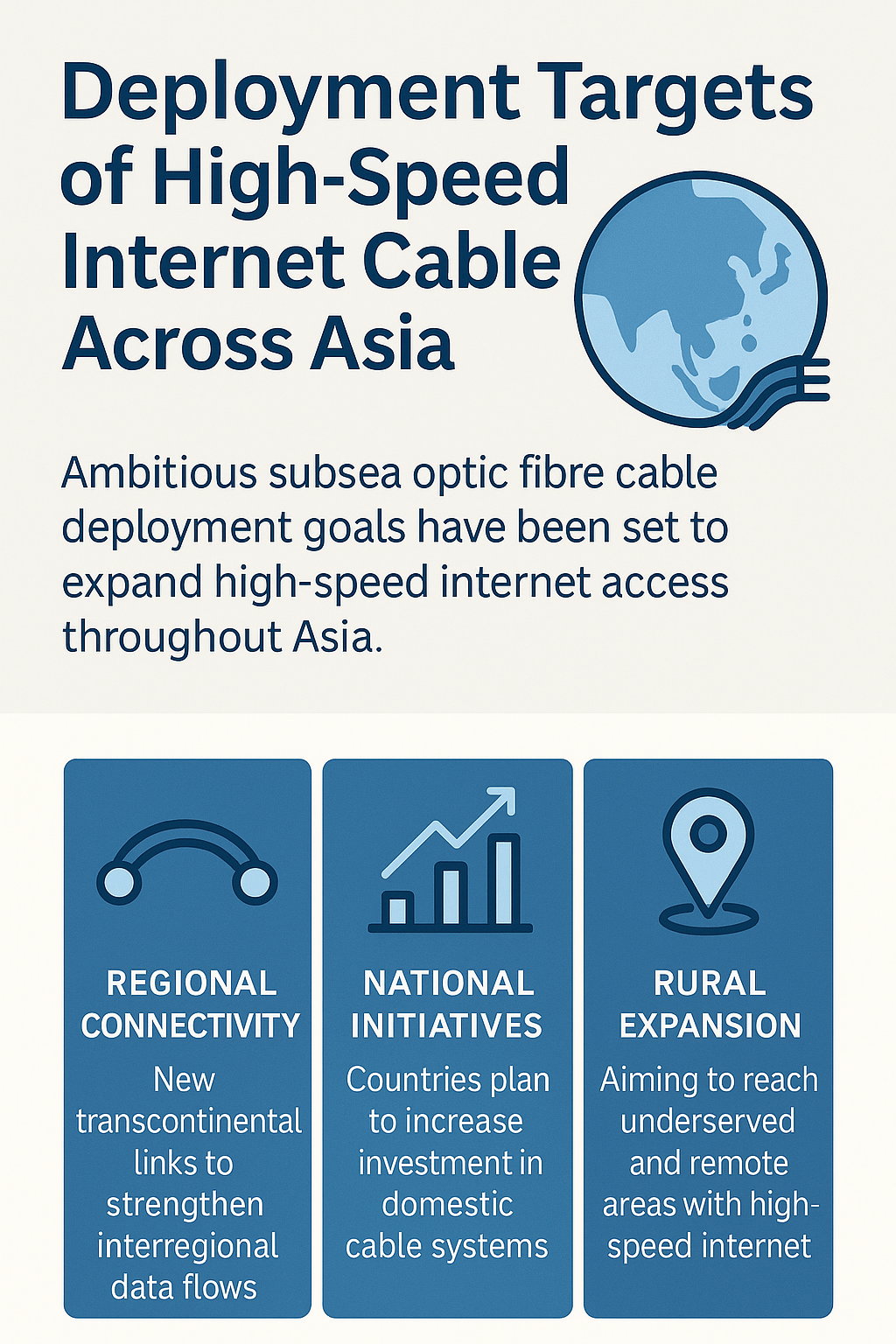Deployment Targets of High-Speed Internet Cables Across Asia

Asia is experiencing an unprecedented surge in high-speed subsea cable deployment, driven by rapid digitisation, cloud service expansion, and a growing demand for low-latency connectivity. Countries across the region have set ambitious deployment targets to increase international bandwidth capacity and reduce dependency on a small number of high-traffic routes. For instance, Japan and South Korea are investing in next-generation cables capable of delivering over 200 Tbps to support 5G, AI, and future 6G applications. Meanwhile, Indonesia and the Philippines are focusing on inter-island and international cable systems to bridge connectivity gaps across their archipelagos. Mega cable systems like the Apricot, Echo, and Bifrost—spanning the Pacific and landing in multiple Southeast Asian nations—are part of a wider effort to create a more redundant and diversified subsea cable network. These systems are being developed in partnership with hyperscalers like Google, Meta, and Amazon Web Services, reflecting a shift in who drives connectivity infrastructure. These big tech-led projects aim to lower transit costs, improve latency, and support regional data centers powering cloud ecosystems across Asia. Despite the growth, deployment challenges remain. Political risks, territorial disputes, and natural disaster zones such as the Pacific Ring of Fire require operators to be highly strategic in route planning and risk mitigation. As new routes avoid congested or geopolitically sensitive zones, there is also a growing interest in alternative corridors such as the Arctic and Indian Ocean regions. This push for diversified cable routes underscores Asia's central role in the global internet backbone.



